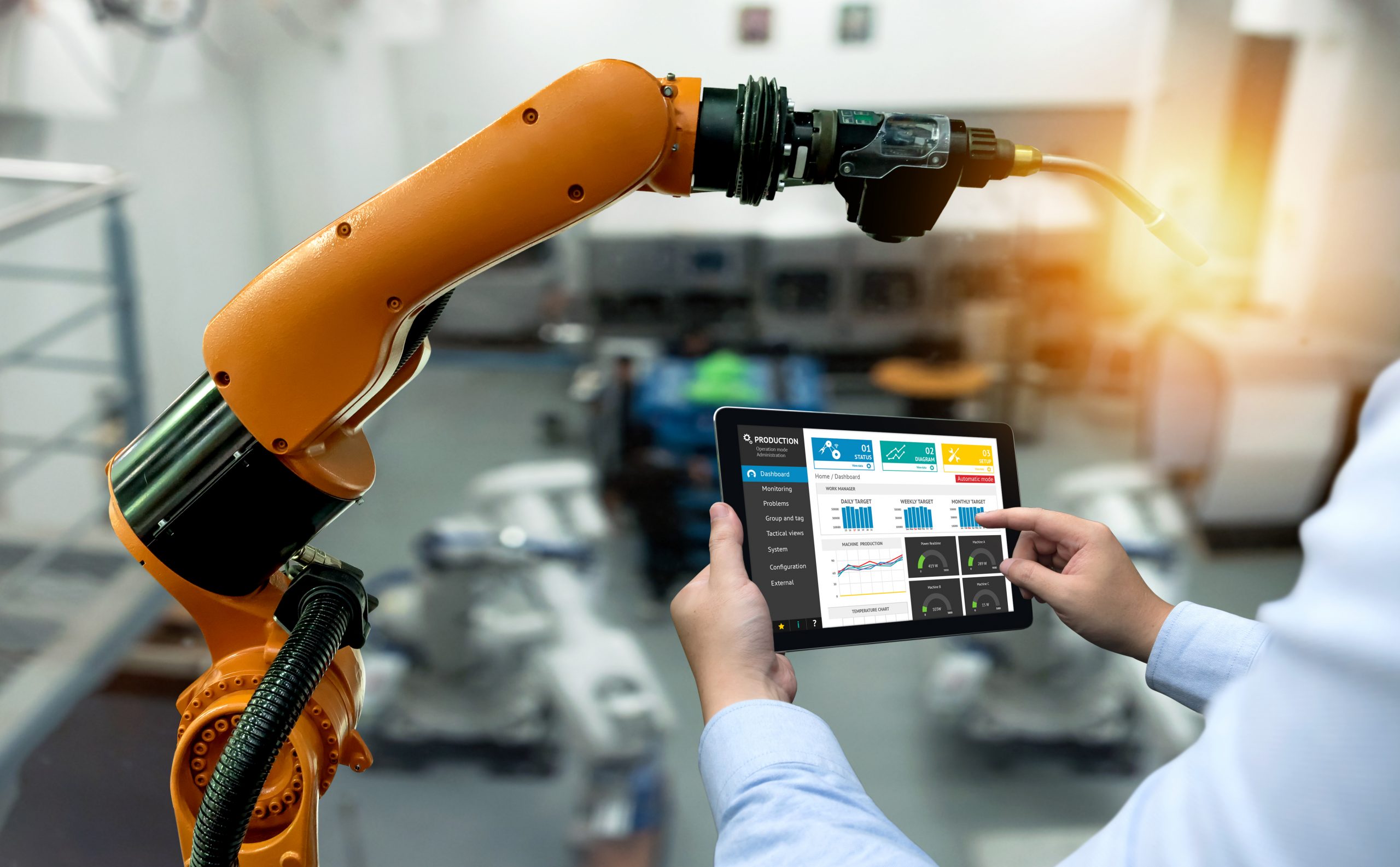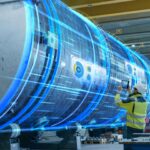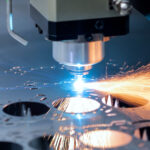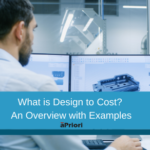
An In-Depth Analysis of the Manufacturing Response to the COVID-19 Crisis and Why Digital Transformation has Become the Future of Manufacturing
An excerpt of this article also appeared in Supply & Demand Chain Executive.
When we step back from the intensity of the challenges that the manufacturing industry has faced recently and look at things dispassionately, it indeed does seem like we’re at the dawn of a new era in manufacturing. At some point in the not-too-distant future, it may no longer be acceptable to conduct business in the same ways we have in the past.
We need to be willing to take some risks, try new strategies, new working methods, and new technologies. We need to look to innovators like SpaceX and Tesla as examples of companies that have completely shaken up their respective industries by adopting new approaches that would have been considered impossible just a few years ago.
In this article, we discuss how the COVID-19 pandemic dramatically impacted manufacturing from design to sourcing to production. And how manufacturers are embracing digital transformation in order to meet rapidly-changing consumer needs, meet product cost targets, and stay ahead of their competition.
There is no question that 2020 was a rough year for all of us. We know the macro picture. At the outset of COVID, supply chain disruptions started early. Over 200 of the Fortune 500 had a presence in Wuhan. One hundred sixty-three of the Fortune 1000 had tier-one suppliers there. And over 938 had one or more tier-two suppliers in the same area. The domino effect of plant closures and supply shortages across the extended supply network led to significant supply chain disruptions. Revenue slowdowns soon followed due to an inability to deliver products, compounded by slower B2B and consumer spending. During the worst of the COVID impact, major automotive manufacturers were burning through $1-2 Billion a week. To respond to the revenue slowdowns, many companies drove rapid cost reductions. Some were easy, like reductions in discretionary spending due to no one traveling, but others were more challenging, like layoffs.
According to the October 2020 US Bureau of Labor Statistics numbers, manufacturing has lost over 700,000 jobs. The good news is that the reduction from 1.4 million reported in March down to 700,000 is a significant improvement.
Survey: Manufacturing Industry Trends During COVID-19
aPriori and The Engineer conducted a survey of almost 500 design engineers in the late summer to get a sense of where things stood at that point. Here are some key findings from that analysis:
- Over 60% of companies surveyed had lost revenue
- More than 50% had supply chain disruptions
- 70% of that 50% was due to the inability to get finished components and systems
- 41% indicated that they had to make product design changes due to those material shortages or supplier resource/internal resource limitations
- Almost 40% indicated that they were either reducing the number of new products they were releasing this year or reassessing their entire product portfolio
- More than 40% faced lost wages or furloughs
- More than 30% had difficulty communicating with colleagues
- While another 25% had difficulty accessing systems and corporate file shares
What was also interesting, though, as we approached the late summer/early fall timeframe, was that we started to get insight into how companies were emerging from COVID.
- 52% were actively working or starting to work on changes to their product design processes to accelerate bringing new products to market
- On the contrary, only 39% were actively using digital development strategies and tools as they were coming out of COVID
How Manufacturers Responded to COVID
From the research we did, and as we worked with many of our customers from the early stages of the COVID crisis, we saw some very consistent trends emerging about how companies responded. And it seemed to come in three phases:
- React to the initial impact of COVID
- Build recovery plans
- Reinvent processes for the new world
The Impact of COVID on Sourcing & Supply Chains
On the sourcing front, mitigating supply chain disruption was the first response. It was all hands on deck. Everyone was sourcing parts, no matter what their job was prior to COVID. And they were looking for alternative suppliers, alternative regions to manufacture, and alternative manufacturing capabilities.
aPriori was put to the test. One large US customer used aPriori to evaluate more than 30 different scenarios over the course of just a few hours to help analyze the cost of different manufacturing and sourcing options.
As we moved into the summer and fall, companies started moving back to steady-state, but it was truly a new form of steady-state, where companies were working with some new suppliers, they had new protocols in their factories and in some cases, new ways of doing business – often more digital.
The Impact of COVID on Design & Engineering Teams
On the engineering front, we saw many NPI projects put on hold to enable engineers to support manufacturing and sourcing. During this time, new suppliers, alternative manufacturing approaches, or new materials were considered, and engineering was evaluating design changes to make these possible. Then as things stabilized, we saw engineering organizations reevaluate product portfolios, both new and existing.
One of the customers we worked with this summer was a manufacturer who had a profitable product line before COVID. Not hugely profitable, but a good contributor. However, coming out of COVID with production volume and cost structures at different levels, its contribution margin was questionable and, therefore, on the chopping block if they couldn’t identify ways to reduce costs in 30 days.
Working with that customer and their cross-functional team of engineering, sourcing, and manufacturing experts, we were able to help them identify $500,000 in potential savings to help improve margin and keep the product line running in 14 calendar days.
The Impact of COVID on Suppliers
Not only were engineering and sourcing teams impacted, but suppliers were impacted. However, these were two very contradictory situations. For some, it was all around keeping manufacturing lines up. Trying to respond faster than ever to RFQs coming in from both existing and new customers. While for others who slowed down because of COVID, it was about maintaining margins, even as cost structures increased due to additional PPE and social distancing requirements.
Over the past few years, we’ve been working with several large and small suppliers – who have been able to reduce quoting time from two days, even two weeks, to a couple of hours by using aPriori.
Several of our supplier customers have increased margins by 5% or more and increased win rates by more than 40%. that experience with aPriori gave them another tool in their toolbox to respond during COVID.
Now we see companies move to this last stage, re-invent. Many of our customers are undertaking a digital transformation, which is truly transforming manufacturing as we know it today.
What is Digital Transformation in Manufacturing?
The term digital transformation is often synonymous with the term ‘industry 4.0’.At a high level, digital transformation in manufacturing means converting manual manufacturing processes into a digital format to simulate the manufacturing process in its entirety, allowing you to run multiple manufacturing scenarios simultaneously within minutes. Digital transformation in manufacturing typically utilizes digital simulation software, like aPriori, to run a digital twin model through a digital factory.
Digital transformation in manufacturing enables businesses to streamline the manufacturing process while meeting – and exceeding – product cost goals.
As companies think about restoring operations and building capacity to deal with future crises, the use of digital technologies will be front and center for many.
The Benefits of Digital Transformation in Manufacturing
There are several benefits of digital transformation in manufacturing, including improved production cycles, increased customization, and better products. Not to mention the overwhelming competitive advantage digital solutions can unlock for manufacturers.
- Reduce Design Time by 25%: A recent survey of CEOs conducted by Fortune Magazine and Deloitte revealed that 85% of CEOs surveyed said COVID-19 significantly accelerated their digital transformation plans. It also highlighted how vital the digital thread’s role is to carry critical data across the entire product lifecycle and that using digital twins reduces design time by 25%. Such data further reinforces that the future of manufacturing is digital.
- Performance and Competitive Advantages: The Boston Consultant Group found overwhelming evidence that shows successful digital transformations drive performance and competitive advantage. BCG also points out that digital technologies offer productivity improvements and better customer experiences in the short term. While in the medium term, it opens up attractive new growth opportunities and business model innovation.
- Seven-Year Acceleration: A recent McKinsey survey says that companies see an average of a seven-year acceleration at the digitization of their core internal operations, back-office production, and R&D processes. They also see the same kind of acceleration of the interactions in their supply chains across all regions of the world. Today, more than 50% of executives interviewed said they’re investing in technology for competitive advantage and refocusing their entire business around digital technologies.
- 5x More Likely to Become Industry Disruptors: Consistent with this, a Deloitte survey revealed that in every transformation, there are front runners, followers, and laggers. Through the survey, they found that digital transformation front runners are 2-3x times more likely than stragglers to seek out ecosystem relationships in order to create new value for customers. And the results revealed that front runners are 5x more likely than stragglers to develop new business models that disrupt their industry, completely changing the competitive landscape.
- Expansion of Ecosystem Relationships: The upside of this potential could be enormous, as manufacturers capable of leveraging their ecosystems can achieve growth in new ways. Companies like Hyundai and auto supplier Aptiv are doing just this. They announced a joint venture this spring to catch up to other automakers’ autonomous capabilities. Now called Motional, that joint venture announced a partnership with Via to bring a shared robo-taxi service to one of Motional’s US markets in the first half of 2021.
- Meet Ever-Changing Customer Demands: While new business models help manufacturers with new and creative ways of interacting with customers, customer expectations around products are also evolving. From implants to surgical guides, technologies like scan to 3D printing have helped improve recovery and outcomes with medical parts designed specifically for the patient. Benefits include patient-specific instruments, reduced surgery times, and more accurate surgical cuts (which can reduce recovery times). These are all benefits that every patient wants. Mass customization is coming to sports as well. Imagine that you’re an avid cyclist living somewhere in a less suburban setting miles away from the nearest cycling shop. Wouldn’t it be great just to scan your head using your smartphone and have a personalized helmet that fits your exact specifications and offers great safety? Well, this is just another way of how scan-to-print is becoming the manufacturing tool of choice for engineers.
The last time we saw a massive revolution in manufacturing was when Henry Ford introduced the concept of mass production to the automotive sector. However, manufacturing growth seems to have been stuck at almost zero growth for the past ten years.
Labor productivity is an essential metric of economic output because, on a macro scale, labor and productivity determine the standard of living we all enjoy. So with the advent of digital transformation, manufacturers are adopting smart technologies and now have the opportunity to move from mass production to customized production – kickstarting that growth engine.
The Manufacturing Digital Transformation Roadmap
McKinsey describes what they call the first five keys to digital transformation.
- Create a digital thread at the beginning
- Work with digitally native manufacturing partners
- Ensure that you have the right digital tools
- Make sure that you and your manufacturing partners have a digital transformation strategy.
- Embrace digital twins, automation, robotics, additive manufacturing, and artificial intelligence as building blocks.
Read more here.
At aPriori, we see many of our customers employing these keys as they undertake their digital transformation. Let’s take a look at what we’ve seen in engineering, sourcing, and supplier teams as they launch their move to reinvent and become more digital.
Digital Transformation for Engineering Teams
Many have already started their digital transformation in engineering because it’s the only way to respond rapidly to changing market conditions. It starts with leveraging digital data and connecting the digital twin with the digital factory in real-time to accelerate the design process. You also need to be able to work anywhere and design anywhere. You can collaborate cross-functionally and share data across the product lifecycle. These are two of the critical things that help companies get the right products to market on time and on budget.
Pre-COVID, two of our leading automotive and aerospace manufacturers incorporated aPriori into their PDP process to support their shift to leveraging their digital twins. Using aPriori digital factories, design engineers could get real-time manufacturability and cost feedback during the design process. And in the future, they plan to leverage manufacturing insights and cost data across their organization and their sourcing and engineering teams.
A large European defense contractor started using aPriori to help facilitate conversations between engineering and sourcing. At one point, when sourcing sent a part out to bid, only a few suppliers would bid on that part. And the bids they received were expensive. The suppliers indicated that it was incredibly challenging to manufacture because of a small undercut in the middle. So sourcing brought it to engineering, opened the part in aPriori, and saw the small area highlighted in red from the DFM guidance.
Engineering immediately recognized this part as an artifact when two parts were merged to make this new part. They quickly identified the issue through engineering and sourcing collaboration and reduced the part cost by 50% compared to the original quote.
Digital Transformation for Sourcing Teams
For sourcing teams, it’s the course of creating flexible and resilient supply chains under the direction of an agile sourcing organization. Even before COVID, we saw best-in-class companies employing technologies that provided sourcing teams with early insights into what’s coming down the product pipeline and that supported collaborative, fact-based discussions internally across the product teams and externally with suppliers. Today, we’re seeing companies employing new ways of working with the supply base.
One of our global heavy equipment manufacturing customers needed to get updated costs on a few hundred thousand parts. Traditionally, this would have been done with spreadsheets, taking years to get those estimates. Instead, it took weeks.
Another excellent example of scale is the cost engineering team who needed to scale their should cost capabilities and find a way to collaborate globally. They adopted aPriori’s cloud solution and, in their first year, were able to generate over 150,000 costings across many regions and supply break basis. And aPriori contributed to a realized savings of over $30 million.
These are just a few exciting ways that sourcing teams have been leveraging digital technology to accelerate their processes, even in ways we hadn’t expected.
Digital Transformation for Suppliers
Suppliers, too, are digitally transforming their own businesses and looking for ways to become part of their customers’ digital equation. With OEMs accelerating product design process to bring products to market faster, suppliers are under significant pressure to respond just as quickly and sometimes much earlier in the design process, but it has to be accurate. That’s why we’re seeing more and more suppliers explore the use of digital factories. If both sides of the negotiation are using aPriori data, not only can both sides come to an understanding of what’s driving costs, but possibly even collaborate to bring those costs down.
By embracing digital transformation, Flex, a major supplier, was not only able to accelerate their quoting process from weeks to days but also have increased their win rate from 12% to 68% just by being more responsive. They use aPriori for speed, but they also feel comfortable with accuracy.
Suppliers can see the impact of a significant uptick in business, but it’s not just about the here and now. Companies have used aPriori’s digital factories to create future what-if factories enabling suppliers to consider new business options. They can look at how manufacturing costs change in different regions with new and different manufacturing technologies like additives providing critical inputs into their overall business evaluation.
During COVID, we saw a number of both supply teams and sourcing teams do this what-if analysis as they considered where to move manufacturing as a result of parts of their supply chains being down.
aPriori’s Digital Transformation Roadmap
Our strategy is the continued development of technology focused on and supporting the four key constituent groups that play a critical role across the product development cycle: design engineering, sourcing, cost engineering, and suppliers or manufacturing. We’re working on four key strategic pillars to help you invent and become more digital using state-of-the-art manufacturing simulation software.
How Manufacturing Simulation Software assists with Digital Transformation:
- Leverage the digital twin with our digital factories.
- Automate engineering and sourcing processes with those manufacturing insights.
- Integrate that manufacturing and cost data with critical systems to help you drive better, more complete decisions.
- Deliver all of that in the cloud, enabling you to become more flexible, scalable, and profitable.
All of this is possible due to manufacturing insights created by the manufacturing simulations we deliver in our digital factories. For those four key constituent groups, we continue to expand our family of applications to enable more extensive use of aPriori manufacturability and cost data at all stages of the product development cycle.
The future of manufacturing is a digital transformation. Digital manufacturing simulation software can help you get started.
We hope we can help you be one of Deloitte’s digital transformation front runners who are successfully accelerating your digital transformation, reducing your design time, accelerating your sourcing decisions, and enabling new ways of working across your manufacturing ecosystem.
Watch the video below to learn more about how aPriori works.
Video: How to Generate Manufacturability Insights in Minutes.
aP Generate





